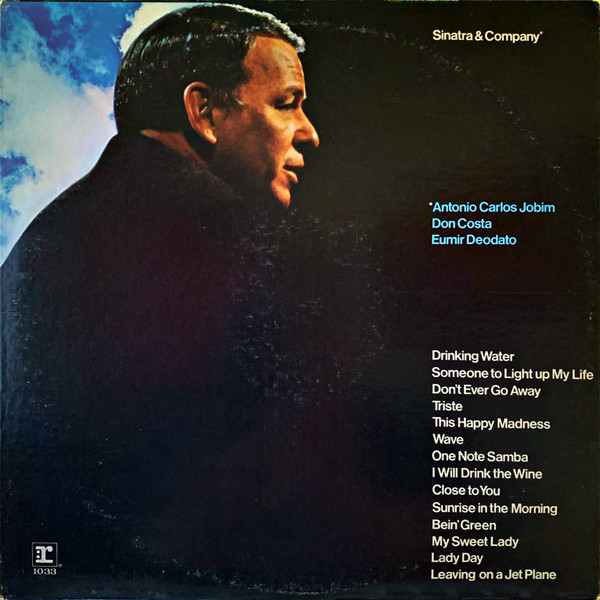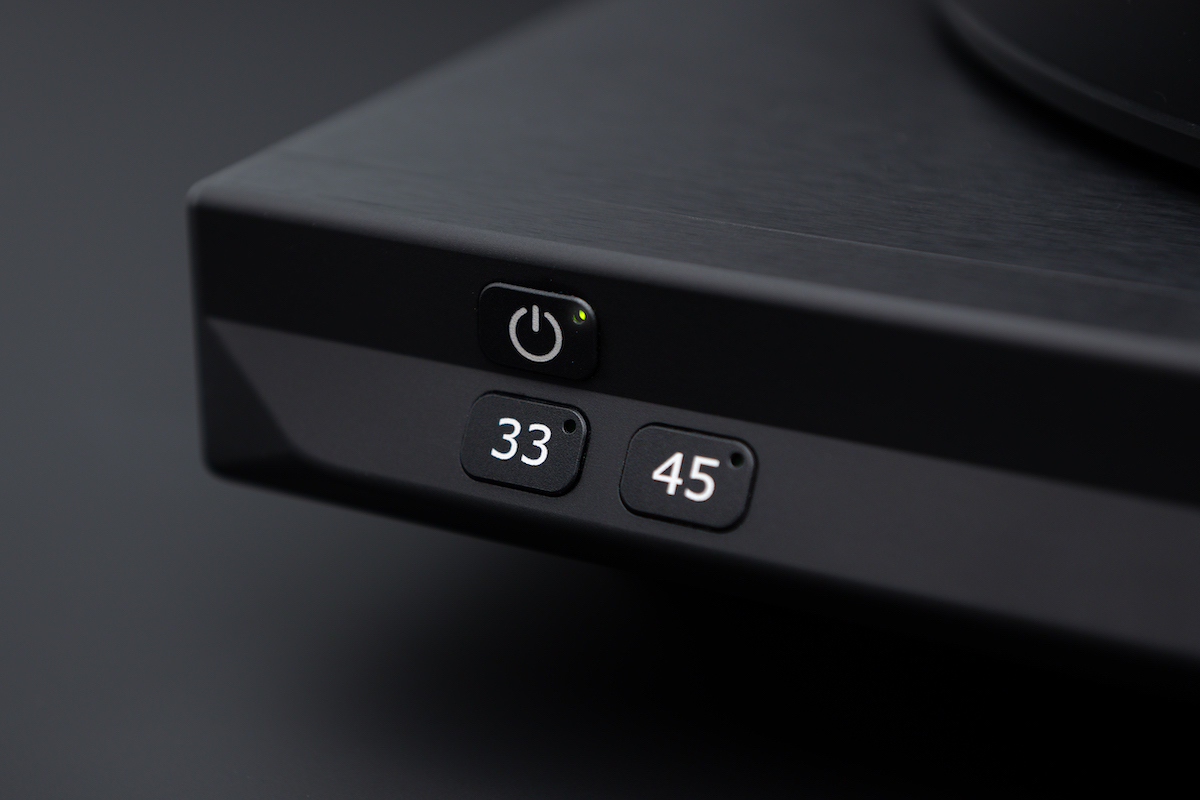Cyrus Audio has been in business for forty years, and this year they introduced their first turntable, the belt-drive Cyrus Audio TTP Turntable. I was impressed by its heavy weight and solid musicality.
Cyrus Audio TTP Turntable Highlights
- Integrated motor drive
- Electronic speed control for 33 1/3 and 45 RPM
- High-precision bearing
- Solid aluminum damped chassis
- Aluminum platter
- Adjustable or replaceable feet
- Has an upgrade port for the Cyrus Audio PSX-R2 power supply for improved performance
Cyrus Audio is based in Cambridgeshire, England, and they are celebrating 40 years of business. In 1984 they launched their first amplifier, the Cyrus One, and have been selling a wide range of components such as integrated amplifiers, CD players, digital streamers, power amplifiers, and power supplies ever since. And this year they introduced their first turntable, the Cyrus Audio TTP Turntable.
And they most certainly are out to impress. The Cyrus Audio TTP Turntable is a heavy, solid machine with a finely designed and executed motor integrated into the plinth, driving a machined aluminum platter with an innovative square belt. And it’s gorgeous as well.
PRODUCT FEATURES:
High-precision bearing
Solid aluminum damped chassis
Aluminum platter
Adjustable and replaceable feet
Has a port for the optional Cyrus Audio PSX-R2 power supply
Integrated DC synchronous motor
Electronic speed control for 33 1/3 and 45 RPM
Supply requirement 90-264V AC, 50/60Hz
MATERIAL:
Aluminum chassis and platter
SPEED:
33 1/3 RPM, 45 RPM
POWER SUPPLY:
Voltage: 90-256V
POWER CONSUMPTION:
Standby: <0.5W
Maximum: 20W
Safety compliance: UKCA, CE
EMC (230V): UKCA, CE
EMC (115V): FCC
DIMENSIONS:
Height: 2.9 inches (75mm)
Width: 17.2 inches (438mm)
Depth: 15.5 inches (395mm)
WEIGHT:
53lbs. (24kg)
WARRANTY:
Three years of parts and labor
MSRP:
$5,800, which includes the tonearm but not a cartridge
PRODUCT FEATURES:
Intelligent self-set-up
Highly-regulated 300VA transformer
DIMENSIONS:
Height: 2.9 inches (73mm)
Width: 8.5 inches (215mm)
Depth: 14.2 inches (360mm)
WEIGHT:
15lbs (7kg)
WARRANTY:
Three years of parts and labor
MSRP:
$1,300
Website:
Company:
SECRETS Tags:
Turntable, Cyrus Audio, belt drive, power supply, reviews 2024, turntable reviews 2024, PSX-R2, PSU, synchronous motor, Classic Phono Preamplifier, tonearm, square belt
Secrets Sponsor
The Cyrus Audio TTP is a belt-drive turntable that plays in 33 1/3 RPM and 45 RPM speeds. Its plinth and platter are precision machined from solid blocks of aluminum that together weigh 53 lbs (24kg). The platter is suspended on a hardened steel axle rotating on an ultra-precise bearing with integrated lubrication that is mounted into a solid aluminum plinth machined from a single aluminum billet. This weight and mass together provide an extremely stable platform for playing vinyl records.
The Cyrus Audio TTP Turntable’s tonearm has been carefully designed using intelligent redistribution of mass to ensure it will exhibit fewer points of resonance. The tonearm’s horizontal and vertical bearing assemblies are almost completely free of friction, which enables the tonearm to extract a considerable amount of information from vinyl records. Cyrus Audio calls this arm the TA3, but I find it bears a very strong resemblance to the Rega RB330 arm. This does not concern me, however, as I consider the RB330 to be an entirely appropriate tonearm for a turntable of this caliber. The Cyrus Audio TTP Turntable is sold without a cartridge, so you’ll want to work with your Cyrus Audio dealer to find the best cartridge to meet your needs.
The TTP’s drive system features a DC synchronous motor and a digital control circuit with exceptional speed stability, so wow and flutter are below 0.1%, which is extremely low.
Cyrus Audio developed a square belt for the TTP Turntable to eliminate some of the drawbacks of rounded belts which can ride up or down the platter. A square belt is more likely to align itself and stay in place. And, in my case, it did just that.
Below the plinth are three adjustable feet, so you can ensure the turntable is level. These feet can also be removed and replaced but, considering just how heavy and inert the plinth is, I’d be surprised if you would hear any improvement with aftermarket feet.
This is a very good-looking turntable in my opinion. The machined aluminum on the top of the plinth has a warm textured pattern that catches and diffuses light. The company’s logo is featured prominently in white just below the tonearm’s cartridge position.
Power to the Cyrus Audio TTP Turntable was provided by a PSX-R PSU power brick supplied with the table, which is suitable for 90-264V operation (50/60Hz). This PSU features a low-consumption standby mode for sustainable operation. When in use, power from the PSU is routed internally to the motor drive stage to provide an even more stable, ultra-low noise power supply for the turntable motor.
On the face of the plinth, to the left, are three buttons: one for power and, below that, a button each for 33RPM and 45RPM. Simple and elegant. There is a green LED light in each button to indicate which is selected. This is a fully manual turntable, so, to operate it, you first press the power button to get it out of standby, then press either the 33 or the 45 button, and then you’re off to the analog races.
There is also a separate port on the back for the optional Cyrus Audio PSX-R2 power supply, which is offered as an upgrade. More on that later.
To begin with, this thing’s plinth and platter are heavy, so it took some muscle to get them out of their packing materials and placed on my listening cabinet. The bearing is pre-lubricated at the factory, so that was one less thing for me to worry about. Then, I adjusted its three feet to ensure the plinth was level. I then carefully inserted the spindle of the platter into the bearing hole and slowly lowered the platter into place. As stated in the user’s guide, I let the platter settle for around fifteen minutes before turning on the turntable. I also fit the included platter mat on top of the platter; the mat is thin and has the appearance of carbon fiber, but I could find no mention of what it’s made of.
After that wait, the platter spun easily and quietly. There is some serious engineering that went into that assembly; the fit is extremely precise and there was no wobble or resistance that I could observe. Next, I fit the Cyrus Audio TTP Turntable’s square rubber belt around the motor pully groove and the platter, then spun the platter a bit, and the belt aligned itself. That was easier than I expected; the Cyrus Audio TTP Turntable’s belt was a set-it-and-forget-it affair.
Up next, I installed the Audio-Technica VM760SLC cartridge that Carlo Lo Raso reviewed. This is a moving-magnet cartridge with a 1.5 x 0.28 mil Nude Special Line Contact Diamond tip mounted on a tapered aluminum cantilever. Its output is 4 mV and it sells for $649. I found the VM760SLC to be a good match with the Cyrus Audio TTP Turntable’s tonearm in terms of resonance and compliance, but you’ll need to coordinate with your Cyrus Audio dealer to decide upon and have mounted a phono cartridge which will be best for your system and budget. After the VM760SLC was installed, I balanced the tonearm and set the VTF and anti-skating.
Finally, it was time for some power, so I connected the Cyrus Audio PSX-R power supply to the appropriate power port on the back of the plinth.
Now I was ready to attach the Cyrus Audio TTP Turntable to the rest of my system. For a phono preamplifier, I used Cyrus Audio’s excellent Classic PHONO phono preamplifier (review to follow). I still had on hand the excellent Amped America AAP-1 preamplifier and 2400 amplifier (review to follow) and the speakers were the Totem Bison Twin Tower floorstanders.
The Cyrus Audio TTP Turntable got up to speed quickly, within fifteen seconds, regardless of what speed it was set to. And it kept that speed without variation, as confirmed with the RPM and Turntabulator apps on my iPhone. There has to be massive torque coming out of its motor, which is surprising because it is contained entirely within the plinth. There was no noise, no heat, nor any sound. The Cyrus Audio TTP Turntable was completely silent.
As stated previously, the table’s PSX-R PSU promises stable and ultra-low noise for the Cyrus Audio TTP Turntable’s motor, and it most certainly delivers on that promise. The music emerged from a very black background, and the images of humans and instruments presented by the music were very stable and easy to focus upon in space. The record-playing hardware simply disappeared and got out of the way of the music being played. I found that the Cyrus Audio TTP Turntable had a solidity of image and body I usually associate with idler-wheel turntables, such as the Thorens TD-124 and Garrard 301 I use as personal reference machines. I’ve never experienced such drive and soundstage depth from a belt-driven turntable before, and I attribute that to the Cyrus Audio TTP Turntable’s impressive mass, motor torque, and square belt. It was the first time I’d actually considered living with a belt-drive turntable instead of an idler-wheel turntable. The Cyrus Audio TTP Turntable most certainly opened my eyes.
And that was all before I attached the Cyrus Audio PSX-R2 PSU to the turntable. This is a standalone external power supply meant to supply extremely smooth and stable DC power to any compatible Cyrus Audio product. It comes in a chassis that’s the same size and material as Cyrus Audio’s other components. There are no modifications required when connecting a PSX-R2 to a compatible Cyrus Audio component; both units will intelligently adjust output and input parameters to suit the pairing. So, you simply power off both units, connect them, then power them on, and the internal circuitry detects the connection and re-adjusts perfectly. The main feature of the PSX-R2 is a 300va toroidal transformer with enormous current delivery capability. Its 30,000-microfarad slit foil reservoir capacitors ensure that very low equivalent series resistance (ESR) and wide bandwidth are presented to the linear mode regulator that follows.
So, what that all meant for me was that the cleaner and greater the power supplying the Cyrus Audio TTP Turntable’s motor, the better the music sounded. With the PSX-R2, I heard a deeper and wider soundstage with far better-defined imaging. It became much easier to see sounds and people as the music played. Once I started using it, I did not want to remove the PSX-R2 from the Cyrus Audio TTP Turntable. It is certainly not cheap, at $1,300, but if you are budgeting for a Cyrus Audio TTP Turntable, I’d strongly recommend you also budget more money to purchase a PSX-R2.

Francis Albert Sinatra, Antonio Carlos Jobim, “Sinatra & Company”, (vinyl LP, Reprise Records RS 1033, 1971)
A good friend of mine knows I collect Sinatra and gave me this LP in sealed, unplayed condition. This album is a bit of an oddball; side one is bossa nova-style songs, and side two is soft-rock ballads from the likes of John Denver and Burt Bacharach. So, a lot of those arrangements have a rock-like energy and you can just tell that Mr. Sinatra just ain’t loving it. That said, the Cyrus Audio TTP Turntable did a great job of getting the sound and energy of that awkwardness out of the grooves of the LP. The rock-solid platform let me hear the full glissando and shine of the strings and the percussive punctuation marks, like bells and triangles, really popped out of the soundstage.

Low, “Secret Name” (vinyl 2 x LP, Krank 035, 1999)
This is one of the great many all-analog masterpieces recorded by the late great Steve Albini at his Electrical Audio studio in Chicago, IL. As with most of Low’s albums, this one features a lot of slow, quiet music built around the vocal harmonies of Mimi Parker and Alan Sparhawk, so an absolutely silent system is necessary to get the full force of the music while still preserving the room echo and air around the instruments. At times the music is nothing more than Mimi Parker singing alone while she thumps on a floor tom with Alan Sparhawk’s electric guitar amp somewhere way back behind her, and the Cyrus Audio TTP Turntable respected the intimacy of the performances and the huge soundstage Albini captured in the recording. This is one of my reference recordings and there are few moments more mesmerizing than hearing the song “2-Step” played back on a good analog sound system.

Silvia Tarozzi, “Mi Specchio E Rifletto” (vinyl 2 x LP, Unseen Worlds records UW031LP, 2020)
Tarozzi is a composer and improviser whose primary instrument is the violin. This is one of those records I just can’t listen to in a digital format; I need to hear the warmth and humanity in the timbres of the acoustic instruments or else it just doesn’t work for me. It features a lot of interplay between cello, flute, double bass, and saxophone, with phrases being carried across the instruments like an Albinoni piece for a string quartet with Tarozzi occasionally singing in Italian. The Cyrus Audio TTP Turntable gave me the full spectrum of these instruments’ timbres while displaying each instrument in a specific place on the soundstage without the timing of the notes ever suffering. And when Tarozzi puts some icing on the sonic cake with treated vocals or digital effects on the instruments, the TTP Turntable handles it all with grace. I could easily distinguish between an acoustic string instrument and a digital effect on an acoustic string instrument, and that got me much closer to the intent of the performances. The Cyrus Audio TTP Turntable enabled me to hear very deeply into the recording.
Secrets Sponsor
For $5,800, the Cyrus Audio TTP Turntable delivers engaging music from a rock-solid platform and black background. Expensive but worth it in the long run.
- Music has a very strong sense of drive and excellent timing of notes.
- Runs at precisely 33 1/3 RPM and 45 RPM.
- Easy to access speed control on the front of the chassis.
- Very attractive.
- The motor is integrated into the chassis giving the turntable a very clean look.
- The square belt is easy to install and aligns itself.
- Its sound quality can be improved with the Cyrus Audio PSX-R2 power supply.
- Pairs very well with the Cyrus Audio PHONO preamplifier.
- Nothing
I believe that Cyrus Audio set out to impress with their new turntable, and they most certainly succeeded. The Cyrus Audio TTP Turntable is a worthy addition to their already impressive line of components, especially when paired with their PSX-R2 PSU and Classic PHONO phono preamplifier. I hope I get the opportunity to spend time with other Cyrus Audio components.








